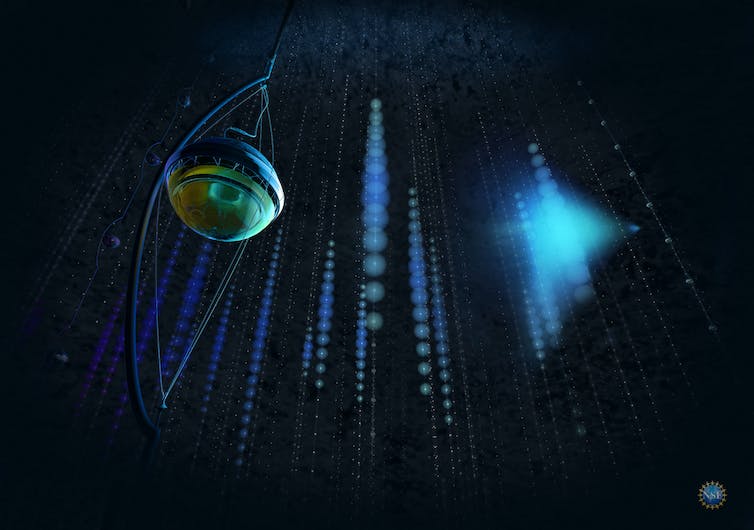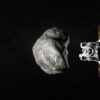The South Pole IceCube Neutrino Observatory – the biggest and strangest telescope in the world – has detected the first neutrino emissions from within the Milky Way, an achievement that will shape how astronomers view our galaxy.
Neutrinos are tiny, electrically neutral particles that pass through most matter undetected. They are created in extreme environments like those surrounding massive black holes, and they travel unhindered through space and matter in a straight path.
Because black holes and exploding stars are too far away to visit, and too extreme to reproduce in a laboratory, scientists rely on cosmic messengers – like visible light from stars – to study them. Neutrinos are another type of cosmic messenger, but they’re too small to be seen with our eyes, or even most types of telescopes.
That’s where IceCube comes in. The observatory, based in Antarctica, is made of up of a billion tons of ice equipped with a grid of frozen-in sensors. The sensors light up when they detect a neutrino passing through, and, based on the sensors’ arrangement, researchers can determine the energy and direction of the neutrino that created the flash.

Sensors embedded in the ice allow researchers to detect neutrinos.
NSF/IceCube
From there, researchers can use the energy and direction to try to figure out where in the universe the neutrino came from.
As the interim director of the Wisconsin IceCube Particle Astrophysics Center, I ensure we have the people and resources needed to help researchers succeed in using the IceCube observatory.
Detecting neutrinos using ice
Identifying the flashes of light from neutrino interactions on IceCube’s sensors can be a challenge. IceCube records about 2,600 events each second, though most of these events come from high-energy particles called cosmic rays, which also produce a steady rain of neutrinos upon hitting the Earth’s atmosphere. Only a few hundred of the hundred thousand neutrinos seen each year are from galactic or extragalactic sources rather than cosmic rays.
A neutrino interacts with ice in the IceCube detector, producing light recorded by IceCube sensors and indicating its direction and energy. IceCube.
Finding the neutrinos from outer space, rather than those from cosmic rays, is like trying to see a faint feature in a portrait covered by many layers of paint – you have to be careful not to remove what you’re trying to uncover.
Surprisingly, the first two neutrino sources that IceCube researchers previously identified came from outside the Milky Way – one of which was a very bright galactic object called a blazar. These neutrinos were quite distant, but higher-energy than any sources from within the Milky Way.
Finding fainter Milky Way neutrinos required some clever work by IceCube collaborators at Drexel University and Dortmund University. Their work on…



